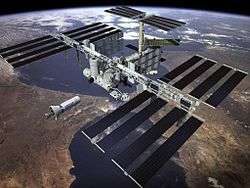K-1 (rocket)


The Kistler K-1 launch vehicle was to have been a two-stage, fully reusable launch system aerospace vehicle in commercial development by Rocketplane Kistler. It was designed to accommodate a wide range of missions, including payload delivery to low Earth orbit (LEO), payload delivery to high-energy orbits with a K-1 Active Dispenser, technology demonstration flights, microgravity missions, and commercial cargo resupply, recovery, and reboost services for the International Space Station. After failing to meet financial milestones, NASA announced in October 2007 that it was terminating funding for the project.[1]
Reusability
"The first stage of the vehicle would fly back to the launch site; the second would orbit Earth before returning. Recovery of the stages would be by parachutes and air bag."[2]
See also
- Commercial Orbital Transportation Services
- List of private spaceflight companies#Crew and cargo transport vehicles
- List of space launch system designs
- Rocketplane Limited, Inc.
References
- ↑ Berger, Brian (2007-09-07). "NASA Gives Rocketplane Kistler Termination Notice". Space.com.
- ↑ Description of Kistler K-1 on Astronautix
External links
- Kistler Web site for the K-1 Vehicle, incl. link to component diagram
- Description of Kistler K-1 on Astronautix
